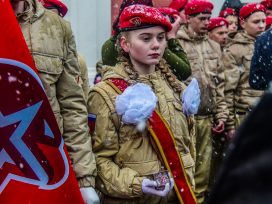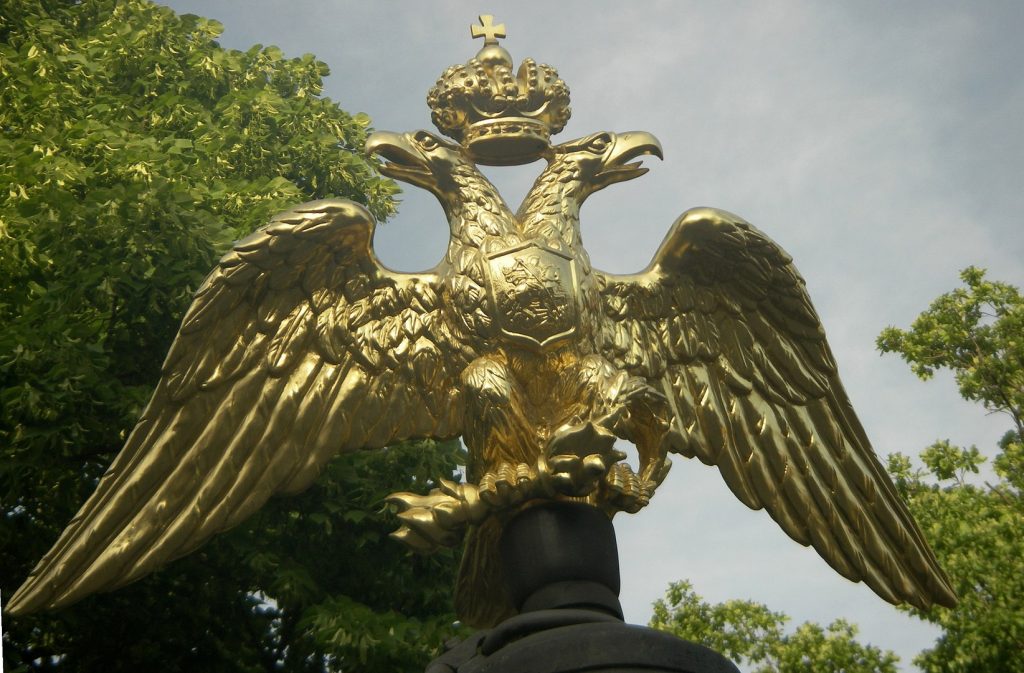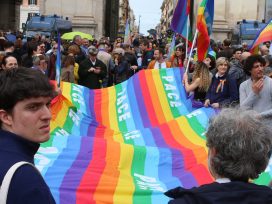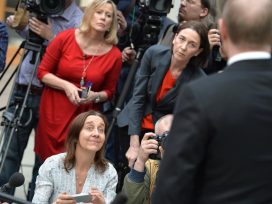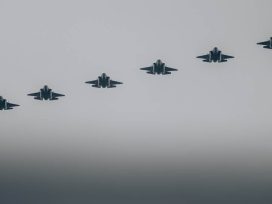Unlike absolute monarchies or military dictatorships, the political regime forged by Vladimir Putin over his twenty-year reign relies neither on ancient tradition nor on brute force. Rather, it is an ‘electoral autocracy’ – a personalized regime with a strong domestic base. Over the last several years, however, the regime’s repressive dimension has significantly increased as the ‘national leader’s’ popularity eroded.
Some commentators also describe contemporary Russia’s political system as ‘patrimonial authoritarianism’, because of its reliance less on formal rules and institutions as on informal patronage networks. The emergence of this system of personal dependence and clienteles has prompted some observers to talk about the revival of archaic practices that together can be characterized as ‘neo-feudalism’.
Among its features are the prominence of a privileged ‘service class’ (a ‘new Russian nobility’, as the Secretary of the Russian Security Council, Nikolai Patrushev, famously put it) and the establishment of the rigid social hierarchy made of ‘estates’ and corporations that hinder social mobility. Another characteristic of neo-feudalism is said to be the conditional character of property, which is constantly being re-divided, re-distributed and often simply taken away.
Over the last two decades, Russia’s governing elites have developed a highly idiosyncratic vision of the national past. Both Putin – the ‘elected autocrat’ – and his Kremlin courtiers – the newly minted ‘bluebloods’ – eagerly embrace the entire ‘one thousand year’ span of ‘glorious Russian history’, styling themselves as direct heirs to both Soviet communism and the imperial era. It would seem, though, that Putin personally favours Russia’s Belle Époque – the late imperial period, and in particular the reign of Alexander III. During Alexander’s rule, Russia enjoyed economic growth, international prestige and social stability while the revolutionary movement was completely supressed.
Entering his third decade at the pinnacle of power, Putin increasingly appears to be casting himself as a traditional Russian absolute monarch. However, there is a chasm between Putin’s historical fantasies and the mental world of the Romanovs. The ‘Putin’s palace’ saga speaks volumes about this cultural gap.
In Russia’s imperial epoch, the notion of a ‘secret palace’ would have been utterly absurd. For the Romanovs (as for all the other great European dynasties), architecture served as a powerful mechanism of rule. A royal palace was a public space where the absolute monarch and his court were presented in all their splendour before the masses. As the historian Richard Wortman demonstrated in Scenarios of Power, the representation of the monarch and the exercise of power were mutually reinforcing processes. A dazzling spectacle of royal court life unfolding against the backdrop of magnificent mansions constituted a symbolic realm that lifted the ruler above his subjects.
But in private, most Romanov monarchs were rather modest. When the artist and art historian Alexandre Benois inspected the imperial chambers of the Winter Palace in 1917, he was struck by the austerity of Nicholas I’s room, noting in his diary that it served the ‘strict sovereign’ as both a study and a bedroom; next to a large desk stood the emperor’s ‘simple soldier bed’. Alexander III, Putin’s royal role model, was also known for his frugality and dislike of extravagance. According to a memoirist, at Gatchina, his favourite suburban retreat near St. Petersburg, Alexander lived a life ‘more like that of a private country squire than that generally supposed to be led by a sovereign’. He and his family stayed in small, low-ceilinged rooms filled with knick-knacks and bulky Victorian furniture.
Being thrifty himself, Alexander never hesitated to discipline profligate members of the extended imperial family. In 1886, its size was significantly reduced when a new law limited membership to the children and grandchildren of reigning emperors. He went on to expel grand dukes (his brothers, uncles and cousins) from their quarters in the Winter Palace that they had occupied at court expense. Their right to take whatever they fancied from the imperial property – art objects, silverware or furniture – was also removed.
The picture painted in the Navalny film about Putin’s prize piece of real estate on the Black Sea is a travesty of imperial practices. Clearly, in the twenty-first century, the Russian president cannot simply be presented as a transcendent monarch; his legitimacy needs to rely – at least formally – on the popular vote. Imperial grandeur, with all its pageantry and palaces, is not a key element of Putin’s ‘scenarios of power’. Yet the Kremlin leader, who as a teenager roamed the backstreets of 1960s Leningrad, appears hell-bent on ‘living like a king’ in his private life. This sickly obsession with luxury – which, as the authors of the film noted, borders on ‘mental illness’ – found its realization in the tacky opulence of his ‘secret’ seaside residence.
A short and simple explanation for what seems to be a classic example of megalomania was given by the late Boris Nemtsov, not long before he was assassinated in 2015. Putin, he said, ‘is a f***ing nutcase’. There is however, a more ‘sociological’ explanation. This is that contemporary Russia is a classic ‘captured state’, run and owned by a tiny, close-knit group of people. All are fabulously rich, possess incredibly lavish private mansions and indulge in conspicuous consumption. The group is hierarchically structured, with Putin playing the capo dei capi. As top dog, he is entitled to have ‘the best of everything’ – including the largest private house in the country. It is a sign of his status and authority within the group. For his cronies, Putin is indeed a ‘tsar’.
But ironically, he is a ‘sovereign’ in a ‘clandestine monarchy’ – one that cannot be shown to the public for fear that it might revolt.
